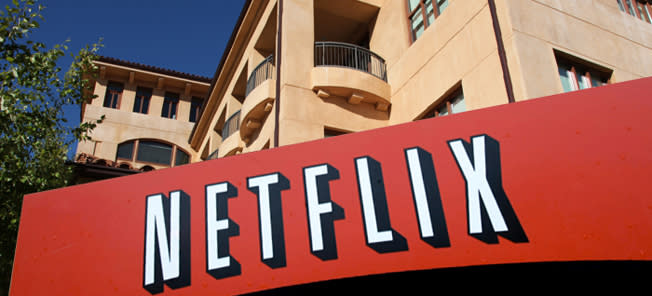Was Verizon lying to us about Netflix congestion issues?
For months, Netflix has been adamant that Verizon is the root cause of streaming slowdowns on its service, but Verizon countered last week with an accusation of its own: Netflix itself is responsible for the nosedive in streaming quality. Verizon Regulatory Affairs VP David Young shared the evidence on the Verizon Policy Blog, concluding that Netflix could solve the issue by making a few simple adjustments, but Netflix network operator Level 3 has now joined in the fight to try to catch Verizon in a lie.
According to a recent update on the Level 3 blog, David Young might have accidentally admitted that the congestion is indeed caused by Verizon:
“His explanation for Netflix’s on-screen congestion messages contains a nice little diagram. The diagram shows a lovely uncongested Verizon network, conveniently color-coded in green. It shows a network that has lots of unused capacity at the most busy time of the day. Think about that for a moment: Lots of unused capacity.”
If Verizon has so much unused capacity, why can’t it spare some to decrease the throttling of Netflix streams? Level 3 claims that Verizon is not only spreading oversimplified and untrue data, but also that Verizon could fix these issues as quickly and as inexpensively as the service provider says Netflix could. Level 3 uses Los Angeles as an example.
“All of the Verizon FiOS customers in Southern California likely get some of their content through [one] interconnection location. It is in a single building. And boils down to a router Level 3 owns, a router Verizon owns and four 10Gbps Ethernet ports on each router. A small cable runs between each of those ports to connect them together.”
In order to fix the congestion once and for all, Level 3 would simply have to connect a few more 10Gbps ports on the routers. It would take less than 10 minutes. If Verizon doesn’t have access to a port card to support more streams, Level 3 is willing to buy one. If Verizon can’t afford the small cables that connect the routers, Level 3 will foot the bill on those too.
“But, here’s the other interesting thing also shown in the Verizon diagram. This congestion only takes place between Verizon and network providers chosen by Netflix. The providers that Netflix does not use do not experience the same problem. Why is that? Could it be that Verizon does not want its customers to actually use the higher-speed services it sells to them? Could it be that Verizon wants to extract a pound of flesh from its competitors, using the monopoly it has over the only connection to its end-users to raise its competitors’ costs?”
We might never know.
More from BGR: Google Maps for Android just got some awesome new features
This article was originally published on BGR.com
Related stories
Netflix would rather the FCC do nothing than authorize 'fast lanes'
This is how you can get Verizon customer service to cater to your every whim


